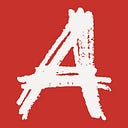Writing about art, possibly for the first time.
Last week I attended a day course at the Whitechapel Gallery called ‘Writing about Art’ it was led by author of the little red book of near enough the same name — Gilda Williams.
It was a loaded day full of useful tips and advice and importantly diminished our pre-conceived ideas of what good art writing should look like.
When we read reviews from critics, press releases, gallery guides, wall plaques and books about art we are often faced with dense waffle that makes us feel inadequate for not understanding it. Gilda spoke to us about the demand for good writing in the art world and that a lot of these examples are in fact just bad. Useful to those approaching art writing for the first time, here are some tips I took away from the day. It
- If you can put any image next to the text you are reading then it doesn’t work. Try this! We looked at examples of writing which we thought, yes all that sounds really good but the reality was that it wasn’t actually telling us anything specific about the work, we switched in other images of very different artwork and the text still read fine. It was generic.
- Stick with general terms. Find the detail and communicate facts simply — distinguish whether you are stating a fact or explaining an idea.
- What is it that you are looking at? Use intelligent description to draw the reader into what you are talking about.
- What might it mean?
- How does it to connect to the world at large? Why is it meaningful to the viewer, why is what I am looking at important?
- Use concrete nouns to describe an artwork, precise adjectives and drop the adverbs.
- Use one clear idea, where do you see it in the art, use research evidence and detail to support your claim.
- Give the viewer a way in.
- Don’t be afraid to steal/borrow well know perspectives — just reference appropriately.
- Ensure your tone is relevant to the piece of writing.
- Back up any negative judgements.
- Bury house keeping detail, for example where the artist was born, their birthplace etc in the beginning of your text but don’t start with it.
- Avoid lists if possible.
- Put things in order.
- Make references meaningful — don’t assume knowledge. Prove your point!
- Be careful of contradictory metaphors and doubling up descriptions. Be specific.
- Don’t overuse the word ‘and’.
- Don’t tell the viewer what they already know.
- If you use quotes ensure they contribute to what you have to say.
- Use words efficiently.
- And finally, again, use concrete nouns!
If you don’t have a copy already I’d recommend Gilda’s book and if you have the opportunity to attend one of her workshops, do it!
Originally published at WeAreOCA.

